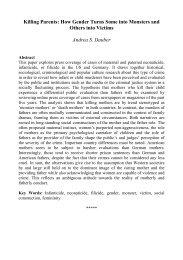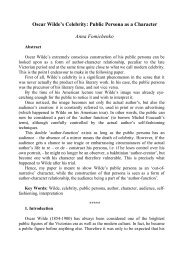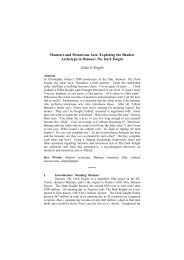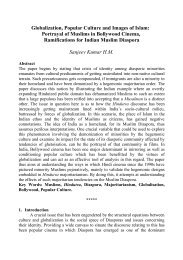“These three avant-garde designers have become an international ...
“These three avant-garde designers have become an international ...
“These three avant-garde designers have become an international ...
Create successful ePaper yourself
Turn your PDF publications into a flip-book with our unique Google optimized e-Paper software.
spaces implicated in this Yamamoto exhibition phenomenon follows the various training<br />
of the org<strong>an</strong>izers. Asi<strong>an</strong> art curators, Architecture <strong>an</strong>d Design curators, <strong>an</strong>d fashion<br />
specialists—Costume curators or the <strong>designers</strong> themselves—all participated in the<br />
dialogue. Here, I will explore these themes highlighting key examples from this<br />
exhibition history—numbering over twenty.<br />
Yohji Yamamoto was born in Tokyo in 1943. Although his initial formation steered<br />
him away from the clothing industry (he attained a law degree from Keio University in<br />
1966), in 1969 he graduated from Tokyo’s Bunka Fashion College (Bunka Fukuso<br />
Gakuin). Yamamoto worked in his mother’s dressmaking shop before opening Y’s Inc. in<br />
1972 <strong>an</strong>d presenting his first Tokyo collection five years later. He went to Paris in April<br />
1981 (at the same time as Rei Kawakubo) <strong>an</strong>d by that autumn was gr<strong>an</strong>ted membership to<br />
the Fédération Fr<strong>an</strong>çaise de la Couture, du Prêt-à-Porter des Couturiers et des Créateurs<br />
de Mode. Yamamoto’s first museum exhibition in 1983 came just two years after he<br />
debuted his prêt-à-porter collection in Paris, which incited visceral reactions of both<br />
wonder <strong>an</strong>d contempt. An article in the October 21, 1982 issue of Le Figaro warned<br />
against the “yellow d<strong>an</strong>ger,” <strong>an</strong>d described the “World War III survivors’ look.” 3 Others,<br />
however, appreciated his work as a visionary <strong>an</strong>d import<strong>an</strong>t contribution to fashion. This<br />
perception of his clothes as different from the fashion norm, as taking part in a larger<br />
artistic phenomenon almost overcoming fashion, caused museums to take notice. 4<br />
Yohji Yamamoto has been called a philosopher, a genius, a poet, <strong>an</strong>d <strong>an</strong> artist.” 5 He<br />
aligns himself with the figure of the heroic artist, noting, “Creating art should be done in<br />
a process of struggle <strong>an</strong>d suffering […].” 6 In Fashion Zeitgeist: Trends <strong>an</strong>d Cycles in the<br />
Fashion System, Barbara Vinken elucidates other’s similar opinions, notably when<br />
2

















